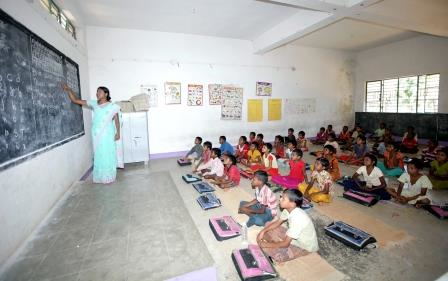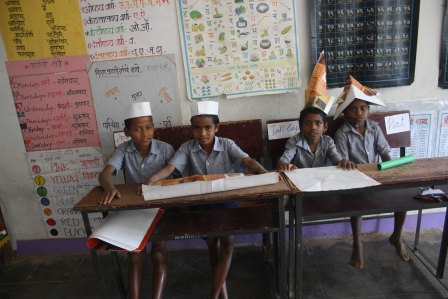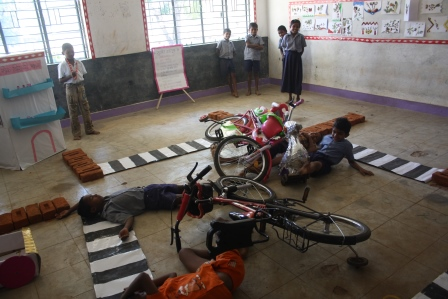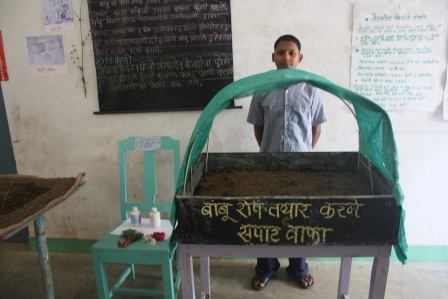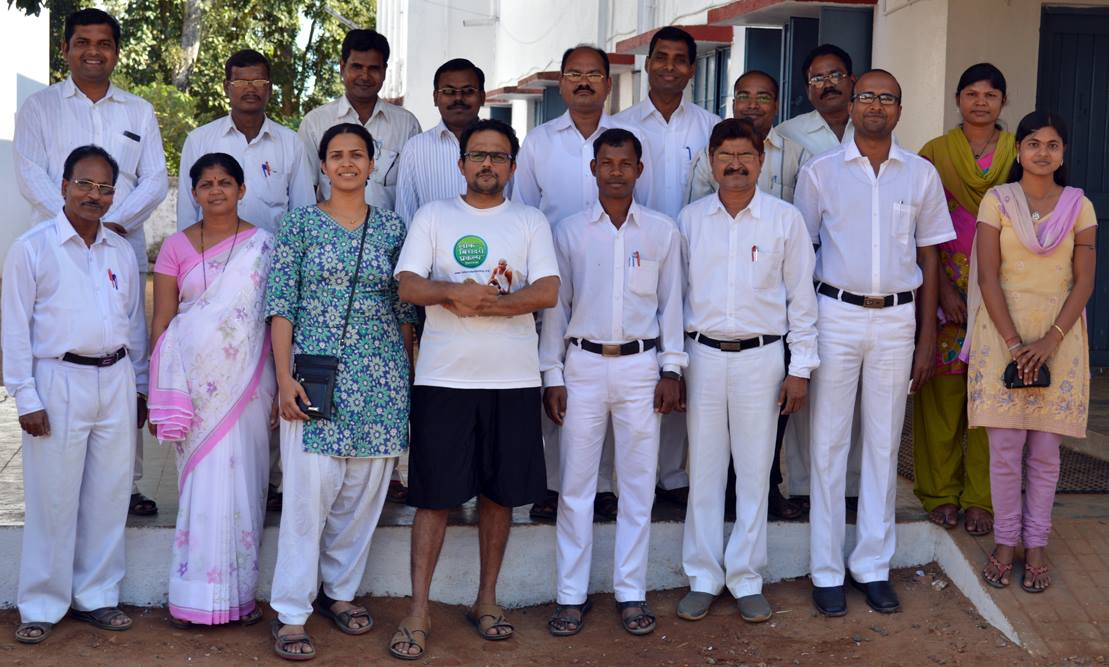Hemalkasa and the neighbouring region was a region rich with natural resources and was home to the Madia Gond tribes. Though these tribes were happy living in wild, singing the nature song; they were foreign to the concepts of clothing, farming, health and education. The Madia Gond tribes were not only cut off from the civilization, but even from the forms of basic rural existence. As a result, they were malnourished, faced high mortality rates and were completely ignorant of life beyond the jungles. After independence, their list of problems only increased with large-scale exploitation by forest officials, traders and merchants who rampaged the forests for their own benefit. This condition of theirs prompted Baba Amte to begin a school. He felt that education was the only way in which the tribal people can be made aware of their condition and therefore strive to improve it.
This noble and simple idea behind starting a school faced many prompt hurdles. The toughest task lay in convincing the tribes, who found no immediate benefit from education. Lok Biradari volunteers embarked on door-to-door campaigns to persuade parents and make them aware of the various benefits of a good education. The school finally started under a tree, with 25 students on the first day. The other prime obstacle was the problem of language. Madia students hadn't the faintest idea of Marathi or Hindi. Therefore, all study material had to be redesigned in Madia. Another challenge was the development of good facilities.
In spite of these challenges, the school has grown to serve nearly 650 Madia children from Nursery to Class 12. The children are provided with all essentials like food, accommodation, medical care, uniforms, stationery, comb, soap, oil etc. The 1976 batch produced the tribe's first doctor- Kanna Madavi. In fact, Dr. Digant Amte and Mr. Aniket Amte were schooled here, who are now doctor and engineer respectively. The school has also produced many advocates, teachers, doctors, engineers, policemen and forest guards.

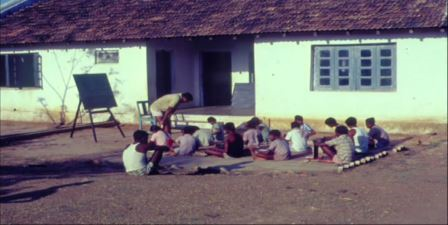
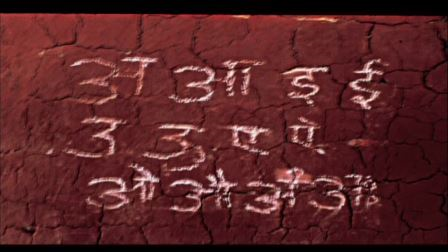
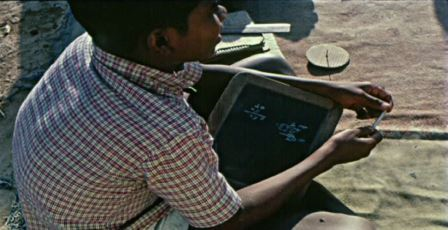
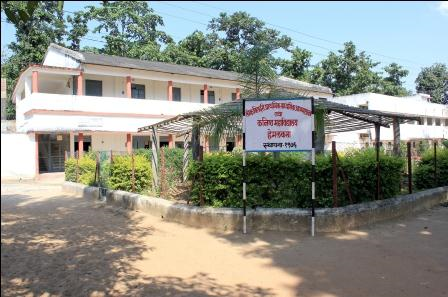

Lok Biradari Aashram Shala, Hemalkasa, was founded in 1976. It started under a tree, with 25 students on the first day. Now, it has classrooms upto 12th standard with about 650 students. It's a residential school and has about 550 students at the hostel including boys and girls. Boys' hostel has 8 students per room. For girls' hostel, it's 10-12 students per room.
When the school started, it had no infrastructure whatsoever. It ran purely on the enthusiasm of the volunteers. Over the years, thanks to the generous donations received, the school has been able to get the infrastructure in place to compliment to the zest and hard work of the volunteers, teachers and students.
The main school premises comprises of two buildings (2-storied each). These buildings provide space for the following:
Classrooms: 13 (Nursery to Class 12)
Staff room for teachers
Principals office
A huge multi-purpose activity hall
Apart from these buildings, there are separate areas constructed for:
Dinning facility for students
Library
Computer Lab
Gymnasium
Balodyan: Kids play area
The school follows state board curriculum. It's semi English medium. The school runs from 27th June to 12th May. Students get 15 days' holiday for Diwali and few days for Holi & Pola.
The primary and secondary divisions have 8 teachers each. Ten volunteers from Lok Biradari Prakalp work as teachers at the school. Boys' and girls' hostels have 1 male and female warden respectively.
During the admission process, preference is given to farmers' kids. Also, if any application is seen from a village which doesn't have any students in the school, it's given a preference.
The children are provided with all essentials like food, medical care, uniforms, stationery, comb, soap, oil etc. Every year, each student gets 2 sets of uniform. One night dress is also provided which is generally picked up from the set of dresses received through donations. For bedding, complete set including warm blankets for winter are provided. For stationary, each student gets complete study material, pen, pencil, colours, lots of paper and craft material especially for the lower grades.
School timings are 11AM to 5PM on weekdays and 7AM to 11AM on Saturday. All students are woken up at 5AM by "Bhupali" (wake up) songs sung by group of students. Once they freshen up, they assemble on the ground for PT (Physicial Training) for half an hour. About 150 students compete at tehsil level, 25 at state level and couple of students at national level in athletics every year. It has been noticed that students' healthy lifestyle and simple habits such as walking long distances barefoot gives them an advantage. These students receive special coaching for about 90 minutes. After breakfast, all students do "Shrama Daan" (volunteer physical work), which includes cleaning school premises, picking up plastic waste etc. It increases their responsibility and their ownership towards facilities of the school.
Every evening (including Sunday), students have "Paripaath" (routine) from 6.15PM to 7PM. Students chant Sanskrit mantra which is known as "Medha Mantra". Some students tell "Suvichaar" (Inspriring quotes). Singing a song in local language (Madia or Gond) is mandatory. They also practise math tables regularly. It concludes with "Pasaydan".
Sleep time for all students is 10.30PM
Each student gets 3 unlimited meals (breakfast, lunch & dinner) every day. The school mess has 2 halls which can accommodate upto 300 students. To maintain hygiene, these are washed 2 times every day. The mess has 5 cooks and 1 helper. It has capacity to prepare food using 16 LPG cylinders. However, only 8 are used right now. It has a roti making machine too. The cooker has a capacity to steam 35 to 40 kg rice at a time.
Students of 1st to 4th standards are served first for each meal. The breakfast starts at 6.30AM. Lunch starts at 9.45AM (10.30AM on Saturday) and dinner at 6.45PM. A batch of 10-15 students serves the food. These students are from 5th to 12th standard.
Eggs are served twice a month. Buttermilk is given twice a week. At 2PM, all students get 50gm packet of Chikki on Monday and Tuesday. On other days, they get seasonal fruits.
All vegetables for the school mess are bought from weekly market of Allapalli, which is on Sunday and weekly market of Bhamragad on Wednesday.
'Everything you need for a better future and success has been already written; and guess what? All you have to do is go to a library!'
and hence the school hosts a dedicated library for the students. The books have been categorized appropriately as per the children library standards, and they are made available to the students during the school hours. The books are categorized as:
Children Activity Books
Story Books
Novels/Fiction
Autobiographies
The school has a state-of-the-art computer lab. The desktops are equipped with Windows/Linux dual-boot system, and educational software packages. The students make use of the lab to study e-books, read e-newspaper, and discuss among each other via forum posts. At times they also view animation movies and listen to Bollywood dance numbers here! Thus the students are learning to make use of technology for learning as well as entertainment.
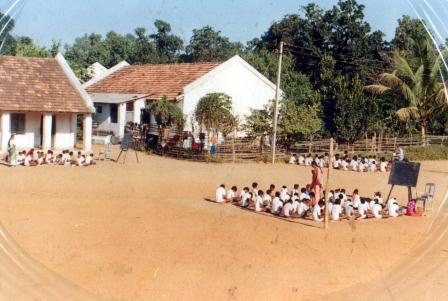
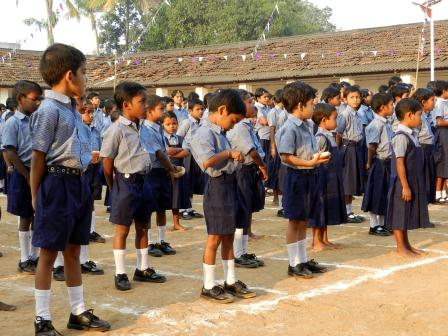
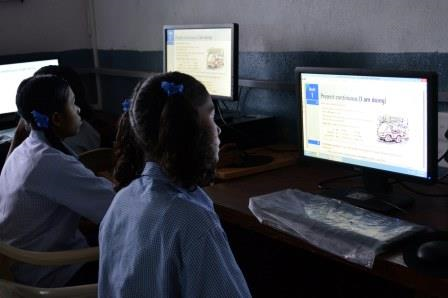
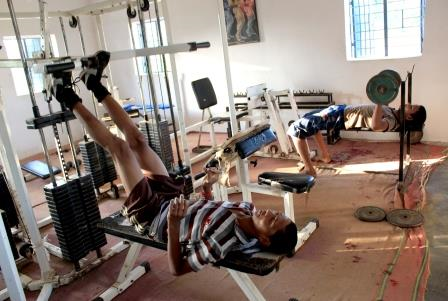
The school has grown from humble beginnings of zero-infrastructure to an infrastructure rich vicinity and deploys interesting ways and means to impart a sense of learning in the students. The teachers play an important role to make the most productive use of the infrastructure as teaching aids.
The campus comprises of classes from nursery through class 12. The school receives an overwhelming response during the admission drive with more than 300 applicants trying to secure an admission every year; of which the school is capable of accepting only 50. There are a total of 660 students in the school with an average of 50 students per class. The student-teacher ratio is 25:1. Of the total students, 40% are first generation school goers. The classrooms deploy various interactive teaching aids to help break the blackboard-teacher-student hierarchy. The school has a dedicated 'English Room' to help students overcome the fear of English language and learn the grammatical concepts in an interactive way by group discussions and pictorial representations, instead of typical book-definition-memorize technique. The school has a state-of-the-art computer lab. with 40 latest (Pentium i3) desktop computers. The availability of the computer lab has opened new avenues of learning. There is a dedicated library with books on multiple genres, which the students can use during the school hours. The school also has a gymnasium and a sports center equipped with kits of multiple sports.
Multi-Lingual Education (MLE), is being implemented in school in order to increase academic efficiency and decrease school intimidation. Madia tribe being of Dravidian race, it is extremely difficult for the kids who enter school to understand and learn Sanskrit based languages like Marathi and Hindi. Taking cognizance of this cultural diversity, and with a view to bridge the gap between the school and the community, Multi-Lingual Education is implemented here.
This has resulted in creating a sense of trust among the tribal kids, eased the process of learning foreign language (Marathi as well as English), and at the same has encouraged the students to take pride in their mother tongue.
At LBP Hemalkasa, we have prepared the following language bridge material comprising of 25 small books which contain:
Alphabet chart
Primer
Bird chart
Animal chart
Fruit chart
Mode of transportation chart
5 listening stories
Basic mathematics
Directions
Here, the language was Madia, but the script was Devnagari to help learn, read and write Marathi easily. Also a tribal teacher was appointed so that kids could relate to pronunciations well.
This approach has resulted in considerable change in the kids. The children who used to run out of the class the first chance they got are now loving to be in one. They are showing an increased literacy level. They have grown bold, and can fluently speak in Marathi, and welcome the guests with eagerness and excitement.
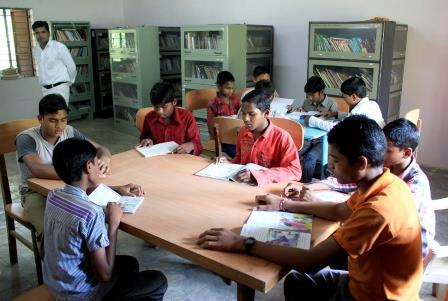
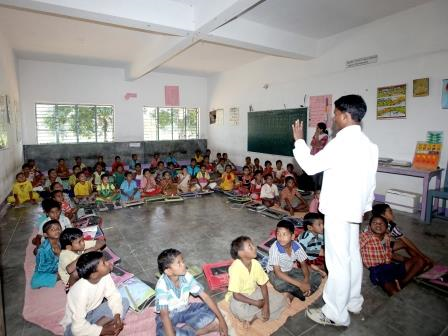

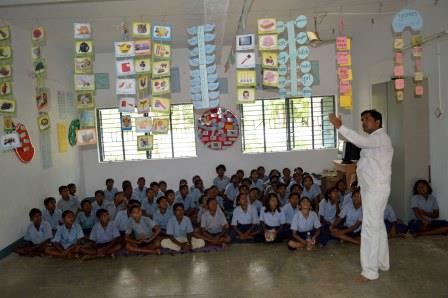
Along with the classroom education, the school engages the students in a lot of outdoor activities in order to expose them to the learning avenues outside the classroom. A few activities supplement the classroom learning, while a few activities help in bringing about cultural development among the children. In addition, a few activities help in developing a sense of socio-economic understanding in the students, and a few activities are purely for fun.
The school has made an effective use of the walls and stairs to use them as teaching aids. A few instances of the same are:
Learning number-line by making use of a number-line painted on the wall
Learning fractions and decimals in ascending and descending order by making effective use of stairs
Learning units of solids/liquids/gases in ascending and descending order by making effective use of stairs
Learning squares and cubes of numbers
Dindi is a ceremonial festival in Marathi culture in which the devotees go on a pilgrimage carrying the palkhis (palanquins) of the saints. Drawing inspiration from this concept, the visionary Baba Amte devised a novel approach to forest conservation. He started a Vruksha-Dindi, which carried trees instead of the sacred footwear. The school students sang songs and appealed the onlookers to help protect trees and forests, and planted trees as they went along. The Vruksha-Dindi continues to be a regular event at Lok Biradari School every year. The students dress up, and set off along the roads educating people on importance forest conservation. The play lejhim-dhol-tasha, a traditional Marathi musical trio attracting the people passing by, and give them message to plant more trees. The event concludes with students planting trees along the hills/roads/planes.
Dahi-handi is an Indian festival, celebrated every August, that involves making a human pyramid and breaking an earthen pot filled with buttermilk which is tied at a convenient height. This event is based on the legend of the child-god Krishna stealing butter. Though this cultural activity is purely for fun and entertainment, it also teaches students the concepts of team building and strategy-planning. The students enjoy singing and dancing after they have achieved their goal of breaking the earthen pot.
Gammat-Jatra, literally meaning 'Fun-Fair' is more than the name suggests. This fair is open to the nearby tribal villages as well. The tribal people are invited to visit the fair, which indirectly gives them socio-economic lessons. The fair comprises of many events, a few of which include:
Science exhibition: Students demonstrate various aspects of science through working models. Eg: Hydroelectricity generation, scientific methods of crop cultivation etc.
Magic shows: These shows achieve a twin target of entertainment and busting superstitions
Food stalls: Students set up various food stalls which consist of preparations made out of things available in the wild. Eg: Sweets made out of Mahua flowers (which are typically used for making Toddy). Thus, the students appeal the tribal populous to refrain from making Toddy.
History exhibition: Students display exhibits of different ages of history (Eg: StoneAge)
Skits and street performances: Students educate the visitors on various social aspects like traffic sense, ill effects of smoking-drinking etc. via skits and street performances
A few students are selected to undergo vocational training every year. These courses are held in the premises of Lok Biradari Prakalp itself. These vocational courses include:
Bamboo handicraft training
Tailoring training
These vocational courses help students achieve expertise in the corresponding domains along with the academic curriculum. The handicrafts prepared by the students are displayed at various exhibitions organised in different cities. These handicrafts are put on sale during these exhibitions, and students receive a royalty of the items sold at these exhibitions, thus marking the first step towards self-sustenance.
Creating wealth from waste is one of the values instilled in the children here at LBP Hemalkasa. Everyone is encouraged to make creative use of the things available at their disposal. 'Scrap Bank' is an activity center on the school premises where the school students invest their creativity to make wonderful things of scrap material. Examples of such things include hydro-suspension crane made out of disinfected scrap syringes from the hospital, handicrafts made out of discarded straws etc.
The students are encourage to set up mini-markets in the school and also in nearby villages of Bhamragad and Alapalli. The idea here is to expose them to the economical know-how of the practical daily life money matters. The students set up vegetable stalls, fruit stalls, handicraft stalls etc. The villagers are also encouraged to participate in these markets, with a view to help prevent the oppression which is highly probable due to the illiteracy. These student mini-markets are thus a step towards socio-economic development of the Madia Gond tribes.
The students are taken to urban outings in order to expose them to life outside their village and school. At times, they are taken dramas/movies. Eg: They were taken to a Marathi drama "Janta Raja" on Shivaji Maharaj, which they loved and enjoyed a lot. They are also taken on weekend excursions around Hemalkasa for hikes, during which they sing songs along the hike, enjoy the nature trail, and have food in the jungle before returning back to the school. The students are thus encouraged to maintain a strong bond with the nature, while being exposed to the urban life.
